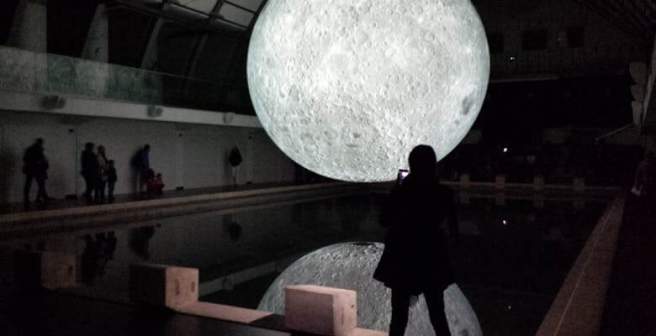How to bring humor into scientific discourse

Science and humor? An unexpected pairing, right? But hear me out! Weaving humor into your scientific presentations, while explaining complex and multifaceted ideas, is a clever trick to keep your audience engaged. Think of it as a light dust of sugar, not a heavy coat, to make the pill of knowledge go down easier. In fact, science and humor already have a popular connection – look no further than the success of shows like The Big Bang Theory or The Infinite Monkey Cage. But why does humor leave a strong impact?
Firstly, humor just makes things way more memorable; a concept –any– just stays with you longer. Laughter provokes emotions that deliver joy, happiness and positivity which improves information recall. Forget dry facts and figures. When wielded wisely, humor can forge an emotional connection that helps embed the details of your research in your audience’s minds.
Secondly, humor is an absurdly effective attention grabber. Picture this: you are onstage presenting your latest work, drowning in scientific jargon and data. Suddenly, a well-timed joke cuts through the monotony. Phones vanish, heads snap up – it’s like a surprise party for their brains. And, just like that, you get the engagement your findings deserve.
And speaking of surprises, humor is great at subverting expectations and challenging beliefs. For example, a humorous infographic might juxtapose common misconceptions about vaccines with scientific evidence, using humor to debunk myths and promote accurate information. It would make one do a double-take and reconsider the things they thought they knew.
Also, can we talk about how humor is a great icebreaker? If scientists started conferences by getting everyone laughing, it would just dissolve any awkwardness or tension right away. Humor creates this relaxed, positive atmosphere that gets people ready to open up and learn.
In fact, research by communication experts and even organizations like Science Riot all point to the power of humor in grabbing attention and making science more relatable.
Using Humor in Science Communication
Humor can thus be a game-changer in your communication. Are you ready to unlock its power? Let’s explore some popular techniques to inject laughter into your communications.
Word Play: This covers all of the classics like similes, metaphors, puns- anything that plays with words in a clever, unexpected way. For example, the “#StemCellfie Contest 2024” puts a playful spin on cellular biology by inviting entries of stem cells captured under a microscope – think “cell-fies” instead of selfies.
Anecdotes: Stories from the trenches of scientific research are pure comedy gold. Hilarious mishaps like Agata Staniewicz accidentally gluing herself to a crocodile prove just that. These “oh-no” moments on Twitter, shared under the hashtag #fieldworkfail, show the human side of science and make it way more relatable.
Visual Humor: Science communicators today are masters of visually depicting complex ideas in over-the-top, satirical ways through comics, memes, animations, infographics… you name it. Visual gags are a genius way to inject humor and boost engagement when tackling complex science. Laughter sticks, and so does the learning.
Satire: This one’s all about using irony, sarcasm and exaggeration to expose flaws or misinformation through the lens of humor. Satire pokes fun at misconceptions or pseudoscience, exposing flaws in reasoning through humor. A lot of XKCD comics are satirical, making playful digs at misbeliefs, and the quirks and complexities of science, technology, and everyday life. But, satire’s a trickier beast. It requires background knowledge (like the issue being mocked) to land. No wonder some XKCD comics fly right over my head (molecular biology major here!).
Self-Deprecation: Scientists appear to be some of the most self-assured people out there, so a little self-deprecating humor can go a long way to make them seem more relatable and human. PHDcomics, for instance, sometimes uses some self-deprecating jokes that poke fun at the struggles and anxieties of PhD students and researchers. These can be relatable and create a sense of camaraderie with the audience.
Humor as a Research Ally
A sprinkle of well-placed humor in your research communication can bring a bounty of benefits. For starters, humor grabs attention and keeps people engaged. More engagement means more eyes on your hard work. But it’s not just about grabbing eyeballs– humor can make the common folks genuinely interested in learning and understanding science. When the atmosphere is relaxed and giggly, people feel less intimidated about asking ‘dumb questions’. Plus, it also ups your public image as a scientist. It fosters trust.
And all that lightheartedness permeates your peers too. When you can laugh together about failed experiments or weird quirks, it creates a relaxed atmosphere for collaborating, with better teamwork and a surge of ideas. Use it in as a strategic tool in public engagement, educational outreach and even your scientific presentations.
The key though is reading your audience and not going overboard. When you tailor jokes to your audience’s interests, you show them you’re listening. That laughter becomes a bridge, a sign you understand them on a deeper level. Know when to rein in the jokes so you don’t look like you’re not taking things seriously. There’s an art to using humor at just the right moments to hook people’s interest without going too far into clown territory.
But, do remember: mixing humor with facts can be tricky. There’s a risk of dumbing things down or offending people.
Long story short, at the end of the day, humor helps make even the most mind-boggling science feel downright enjoyable and digestible. So, keep this in mind the next time you are about to share your work with an audience. And thank me later.





